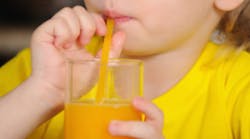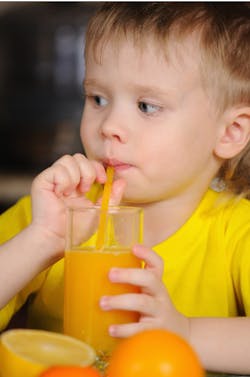Hygiene Message in a Bottle Mailbag: Updated guidelines on fruit juice for infants, children, adolescents
The Hygiene Message in a Bottle Mailbag is a monthly feature of the e-newsletter, Pearls for Your Practice: The Product Navigator. Each month, Colleen Olson, RDH, BBA, the editorial director of the Hygiene Product Navigator, will answer reader-submitted questions to help you navigate your dental hygiene product decisions (and more!). This month, she shares an update to the American Academy of Pediatrics' guidelines regarding fruit juice for infants, children, and adolescents.
It is reassuring to find that nondental professional organizations also make preventive recommendations to avoid decay in children. In its “Policy on Early Childhood Caries” and its “Policy on Dietary Recommendations for Infants, Children, and Adolescents,” the American Academy of Pediatric Dentistry (AAPD) references the stance taken by the American Academy of Pediatrics (AAP) on fruit juice for babies and children. (1,2)
In June, the AAP updated its recommendations on fruit juice for infants, children, and adolescents in a new policy statement. (3) In order to be marketed as “fruit juice,” the Food and Drug Administration (FDA) requires that a product must contain 100% fruit juice without any sweeteners, fortifiers, or flavor additives. The new policy statement recommends that parents completely avoid fruit juice for infants under one year of age. Toddlers between one and three years of age should have no more than four ounces, while children ages three to six should only have up to six ounces per day. A daily limit of eight ounces is recommended for adolescents seven to 18 years old.
The policy stresses the importance of serving whole fruits that contain beneficial fiber over fruit juices that lack it. Dental professionals know that a baby or toddler should never be put to bed with a bottle or cup of juice, but the new policy makes a couple of other good points that I hadn’t immediately thought of: One was the importance of not letting toddlers walk around with a cup of juice that they could easily sip all day. The policy also states that “dilution of juice with water does not necessarily decrease the dental health risks.”
Professional recommendations like these help streamline the job of educating parents on how to prevent decay in our littlest patients. Staying up-to-date on the latest guidelines, policy statements, and recommendations that relate to dental patients is critical. When we are all reading from the same playbook, parents and patients trust us along with the evidence-based positions of these professional organizations.
References
1. American Academy of Pedodontics and American Academy of Pediatrics. Policy on Early Childhood Caries (ECC): Classifications, Consequences, and Preventive Strategies. American Academy of Pediatric Dentistry Reference Manual. 2015–2016;37(6):50-52. http://www.aapd.org/media/policies_guidelines/p_eccclassifications.pdf.
2. American Academy of Pediatric Dentistry Clinical Affairs Committee. Policy on Dietary Recommendations for Infants, Children, and Adolescents. American Academy of Pediatric Dentistry Reference Manual. 2015–2016;37(6):56-58. http://www.aapd.org/media/policies_guidelines/p_dietaryrec.pdf.
3. Heyman MB, Abrams SA; American Academy of Pediatrics Committee on Nutrition. Fruit Juice in Infants, Children, and Adolescents: Current Recommendations. Pediatrics 139(6). http://pediatrics.aappublications.org/content/139/6/e20170967.
More reading
June 2017 | Recommendations for take-home whitening products and whitening toothpaste
May 2017 | Products for sensitivity relief when preprocedural paste and fluoride varnish aren't enough
March 2017 | Happy visits for patients under age 3
Editor's note: Do you have a question for Colleen? Is there a product you'd like to see her review? Or would you like to submit your own hygiene product article? Send an e-mail to [email protected]. You might just see it in the Hygiene Product Navigator! If you're not a Product Navigator subscriber, click here to sign up.
For the most current dental product articles, click here.
For the most current dental headlines, click here.
About the Author

Colleen Olson, RDH, BBA
Editorial Director
Colleen M. Olson, RDH, BBA, is an editorial director for the e-newsletter, Pearls for Your Practice: The Hygiene Product Navigator. She earned a bachelor's degree in business administration from Texas A&M University in 2008 and worked in sales for five years. She graduated from the Blinn College Dental Hygiene program in 2013. She is a full-time mom to Bonnie Grace and is currently a part-time hygienist in private practice in San Antonio, Texas. She enjoys spending time outdoors with her husband, Zach, and their families.


